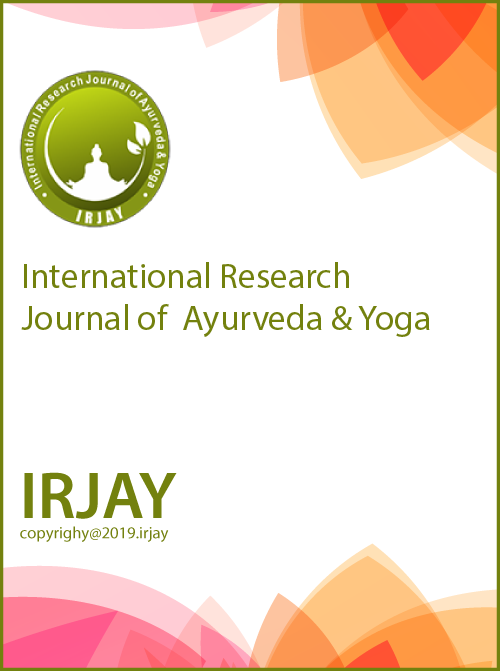Management of Mandala Kushtha (Psoriasis) through Ayurveda - A Case Study
Keywords:
Mahakushta, Mandal Kushtha, Psoriasis, Shaman Chikitsa, SkinAbstract
Mandala Kushta is a type of skin disorder predominantly associated with an imbalance of Sleshma (Kapha) and is categorized under Mahakushta in Ayurveda. It is generally characterized by symptoms such as reddish circular lesions, raised skin patches, intense itching, and a burning sensation. The development of this condition can be attributed to several causative factors, including intake of Kledakar (moisture-promoting) foods, imbalance of the Doshas, blockage of body channels (Srotorodha), suppression of natural urges (Vegadharana), parasitic infestations (Krimi), and psychological disturbances (Manovikaras). Since the condition involves the aggravation of all three Doshas (Vata, Pitta, and Kapha) along with disturbances in Rakta (blood), Mamsa (muscle tissue), and Twak (skin), Ayurvedic treatment emphasizes the use of herbal remedies and classical formulations. These therapeutic measures work by pacifying the vitiated Doshas, purifying and nourishing the Rasa and Rakta dhatus, restoring hormonal equilibrium, and enhancing metabolic and digestive functions (Agni). This essay explores the Ayurvedic understanding of Mandala Kushta, with a particular emphasis on Saman Chikitsa (palliative therapy) as a key component in its effective management. This study aims to assess the therapeutic impact of Ayurvedic Samshaman Chikitsa in managing Mandal Kushtha (psoriasis). A 29-year-old female patient having a complaint of red scaly patches on both hands for 2 years with itching. This condition clinically correlates to Mandal Kushtha described in Ayurveda. Mandala Kushtha has Shwetam Raktam Varna, Sthira, Styanam, and Utsana Mandala (skin begins with special characters. Based on the clinical signs and symptoms, the patient was treated with classical Ayurvedic formulations indicated for Mandala Kushtha (psoriasis). The assessment was carried out before treatment, after completion of treatment, and following the follow-up period. Photographic documentation was done before and after the treatment.
Downloads
References
1. Shastri K. Charak samhita. Vol. 1. Varanasi: Choukamba Orientalia; 2016. p. 19.
2. Shastri K. Charak samhita. Vol. 1. Varanasi: Choukamba Orientalia; 2016. p. 113.
3. Shastri AD. Sushruta samhita. Vol. 1. Varanasi: Chaukhambha Sanskrit Sansthan; 2014. p. 253.
4. Shastri K. Charak samhita. Vol. 1. Varanasi: Choukambaorientalia; 2016. p. 683.
5. Shastri K. Charak samhita. Vol. 2. Varanasi: Choukambaorientalia; 2017. p. 251.
6. Shastri AD. Sushruta samhita. Sushruta samhita. Vol. 1. Varanasi: Chaukhambha Sanskrit Sansthan; 2014. p. 253.
7. Shastri AD. Sushruta samhita. Vol. 1. Varanasi: Chaukhambha Sanskrit Sansthan; 2014. p. 142.
8. Shastri K. Charak samhita. Vol. 1. Varanasi: Choukamba Orientalia; 2016. p. 771.
9. Shastri K Charak samhita. Vol. 2. Varanasi: Choukamba Orientalia 2017. p. 255.
10. Tripathi B. Ashthang hridya, Chikitsa sthana. Varanasi: Choukamba Orientalia; 2022. p. 783.
11. Shastri AD. Sushruta samhita. Vol. 2. Varanasi: Chaukhambha Sanskrit Sansthan; 2014. p. 423.


